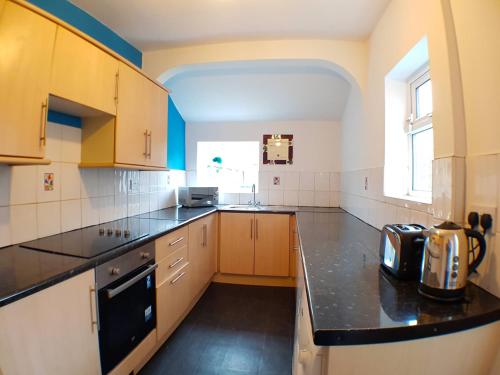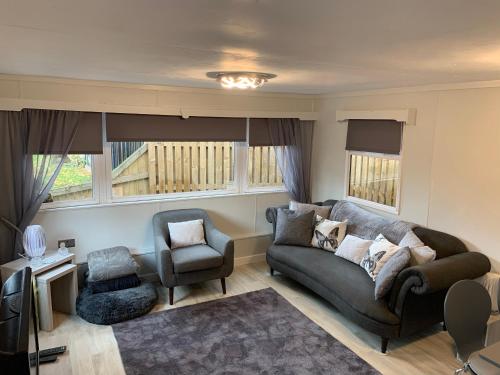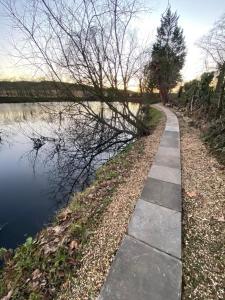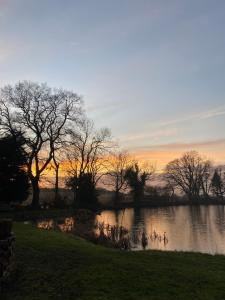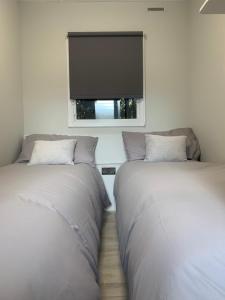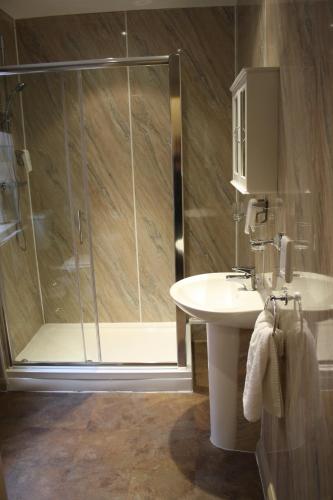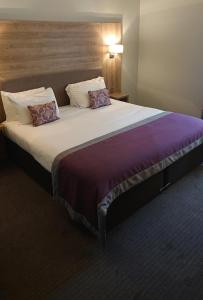Mentioned by Around York
Historical buildings and museums in York


"Family friendly York Castle Museum is centrally situated near Coppergate Shopping Centre – green signs direct you to the ‘Castle Area’. Collections of Costume and Textiles, Military and Social History and a collection on York Castle’s most famous prisoner Dick Turpin, eventually hanged in 1739, all feature in exhibitions. A favourite with children, the recreated Victorian and Georgian rooms here display historic every day items from the collection of North Yorkshire country doctor John Kirk."
"There's precious little left of York Castle except for this evocative stone tower, a highly unusual four-lobed design built into the castle's keep after the original one was destroyed in 1190 during anti-Jewish..."



"This guildhall in the city of York was one of the most important buildings in the medieval city. The majority of the Hall was built in 1357 by a group of influential men and women who came together to form a religious fraternity called the Guild of Our Lord Jesus and the Blessed Virgin Mary. The main part of the building consists of the Great Hall, the Undercroft and the Chapel."
"Merchant Adventurers’ Hall on Fossgate is one of the finest medieval guild halls in existence. A fascinating museum also available for weddings and events (great vintage fairs take place here), the venue’s centrepiece is the Great Hall where medieval merchants once gathered. A collection on display inside includes a range of fine silver, paintings and furniture."

"St Mary’s Abbey is a picturesque ruined Benedictine abbey in York, located in York Museum Gardens. Once the richest abbey in the north of England, it now tells the story of York’s influential ecclesiastical past, and its degradation through Henry VIII’s dissolution of the monasteries. The first church on the site of St Mary’s was built in 1055 and dedicated to St Olaf of Norway, and following the Norman conquest was refounded by King William Rufus in 1088 during his visit to York."
"Once the richest abbey in the north of England, St Mary's lies in what are now the York Museum Gardens, on a steeply-sloping site to the west of York Minster. The abbey dates back to 1086 and over time became the wealthiest monastery in northern England before it was dissolved by Henry VIII in 1539. Over the next 200 years, it fell into disrepair and was largely dismantled for its stone."
"The park also serves as a romantic backdrop to St. Mary’s Abbey… or what’s left of it. The monastery was first built in 1088 and was among the wealthiest and most powerful Benedictine monasteries in England. In the 1530s King Henry VIII banned all monasteries in England in 1530s and St. Mary’s gradually fell into the medieval ruins you can see today."

"LICC is excited to be back in business and will be operating daily from 10am-6pm. They are adhering to strict social distancing guidelines by only allowing 2 people in the shop at a time, but will make exceptions for small babies & children of course. Daily specials and deals are on their Instagram stories so stay tuned!"
"This beautiful vintage-style ice cream parlour (also known as LICC) is a must visit. Enjoy a daily selection of homemade ice cream and fun toppings. Take a seat inside and admire the quirky interior or outside in the sun!"







"If you’re a chocolate addict, York’s Chocolate Story is the place for you. Discover the history of the city’s rich, chocolatey past and even learn how to make chocolate yourself. There’s also plenty of chocolate to choose from in the museum’s shop."
"While the York’s Chocolate story itself isn’t an Instagrammable spot, if you take a tour, you’ll have a chance to create your own chocolate lollypop as well as decorate it as you’d like and then take a photo of it in front of some famous landmark."
"Two words that you might not have heard put together before are ‘chocolate’ and ‘museum’, but it’s happened in York and all our dreams have come true. You’ll find it fairly tough to drag yourself out of here…. View this post on Instagram"

"Designed in fine Georgian style, the Fairfax House was built in 1762 as a dowry for Anne Fairfax, daughter of Viscount Fairfax. The house’s interior is the masterpiece of John Carr, the most eminent architect in York at the time. In 1982 the house was restored by the York Civic Trust and it became, as mentioned in the best-selling book England’s Thousand Best Houses, “the most perfect eighteenth-century townhouse to come across anywhere in England.” Discover its decorative flourishes and artistic treasures, including the Great Staircase, the Venetian Window, and its decorative wrought iron."
"This 18th-century townhouse offers a glimpse into the tastes, fashions, and daily life of Georgian-era nobility. It began as the home of Viscount Charles Gregory Fairfax and then enjoyed brief stints as a gentlemen’s club, cinema, and dancehall before being restored to its Georgian-era glory."

"The Georgian-style Mansion House in York is the home of the city's Lord Mayors during their term in office. This is the earliest purpose-built house of this sort still in use – it predates the Mansion House in London by at least 20 years. The foundation stone for the building was laid in 1725, and it was completed seven years later, in 1732."
"Located in the center of the city, the Mansion House is the official residence of the Lord Mayor of York. But along with being a home, this historic house is popular with visitors. The Mansion House exhibits an impressive collection of paintings, silver and furniture."





